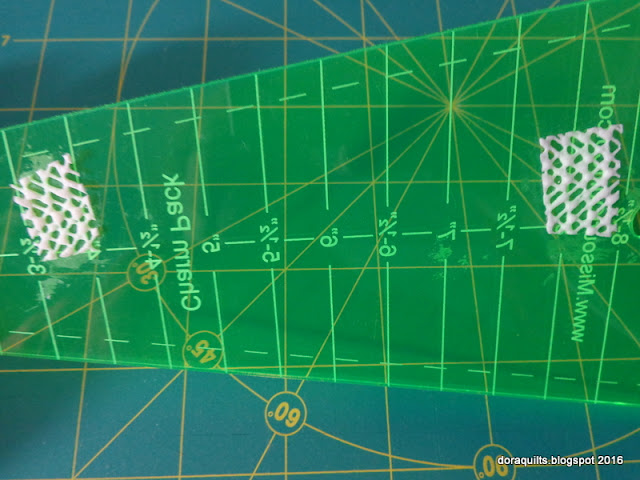This quilt was begun Memorial Day weekend of 2015 and made it to my Nolting long arm a year later. I used white yardage (probably Kona cotton), and Eleanor Burns jelly roll (Benartex) and some yardage from the same line. This is a great way to make a quilt since it has only five blocks. These are Blackford's Beauty, a block that caught my eye in the early 1980s. A lot of people have called this block a lot of other things, including Snowflake. Someone told me Bonnie Hunter has a quilt made from this block in one of her books or on her Quiltville website.
I love these fabrics and their lovely shades of violet and wanted to create some great places for quilting. You can see the stripe I used for binding at the left edge of the above photo--as well as what can happen after quilting for too many hours in a day. But that's all behind me now. It looks great on the bed.
The additional four patches in the layout were easy to do and add interest and movement.
Most of the quilting was done freehand with minimal marking. The local quilt shop was out of blue marking pens, so one of the employees convinced me to use a Frixion pen and assured there would be no problems with it reappearing. Not quite true. The quilt has been laundered and dried because I love the "crinkly" quilt look--but I noticed one morning that there were some tiny black dots and dash lines apparent; my thermostat is set on 60 degrees F. at night, and some of them had reappeared. I didn't notice any when I took photos just now, but the thermostat is set at 68 during the day.
I loved, loved, loved having the large areas for quilting some favorite designs. If I had a do-over, I would have used a lighter shade in the outer border.
It's not a competition quilt, so its imperfections are fine with me.
It was fun to quilt different designs in similar areas, although I'd be surprised if anyone ever notices them.
It's not my last finish of the year, just the last one to have its photo taken in 2016! I can confirm that it's lovely to have on my bed during these cold winter nights. I'll show some more as 2017 gets underway.
Happy New Year's Eve and Happy 2017. I'm going to stay off the roads (and away from the inebriated drivers) and work on the checkered Dresden plate, read, relax, eat some leftovers, and maybe do some knitting.
Happy quiltmaking, knitting, and so on,...















































